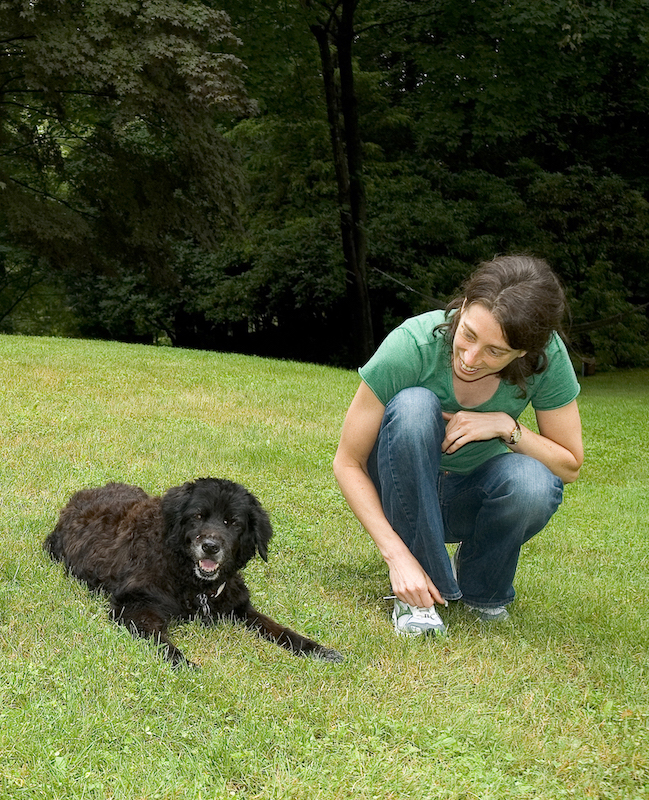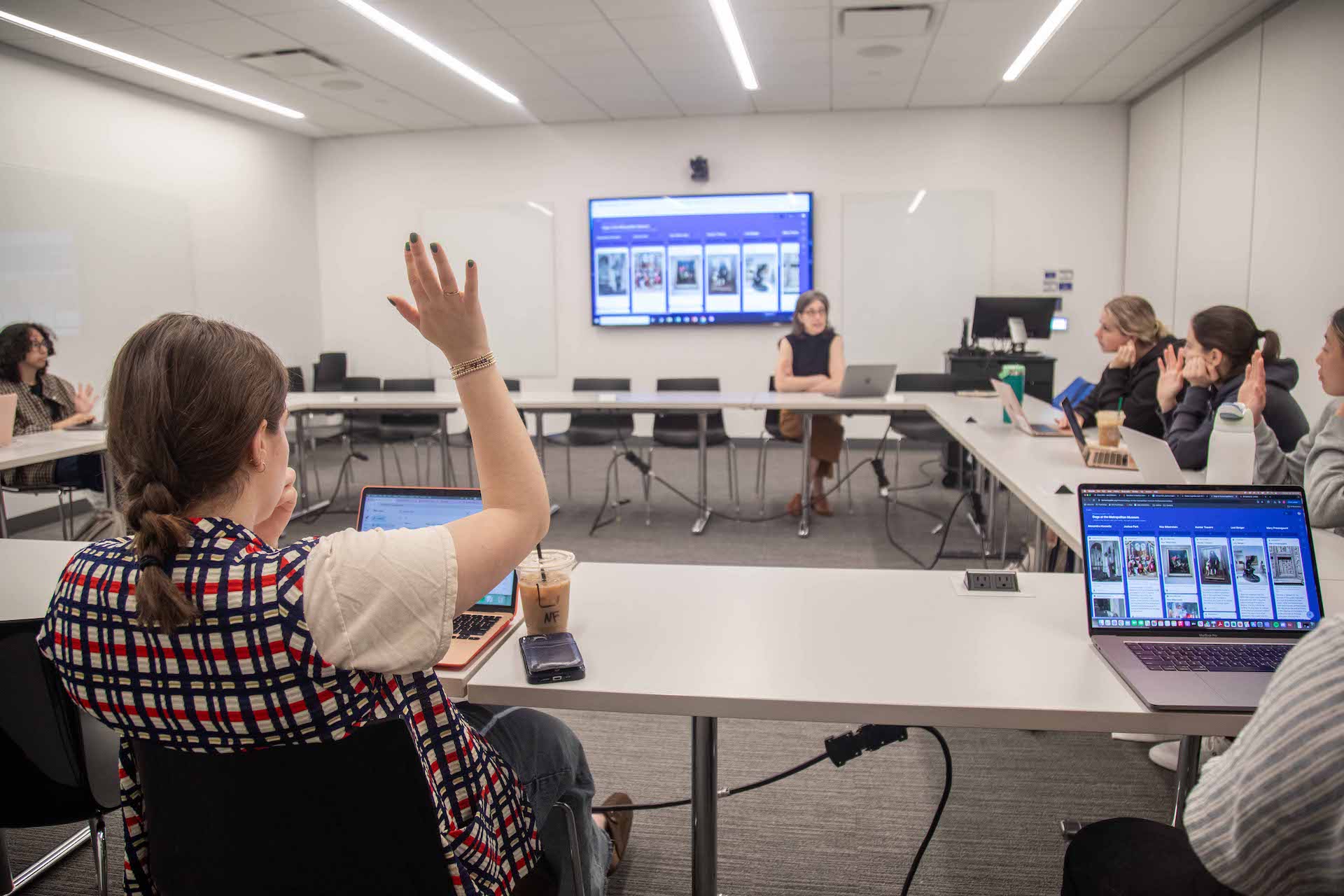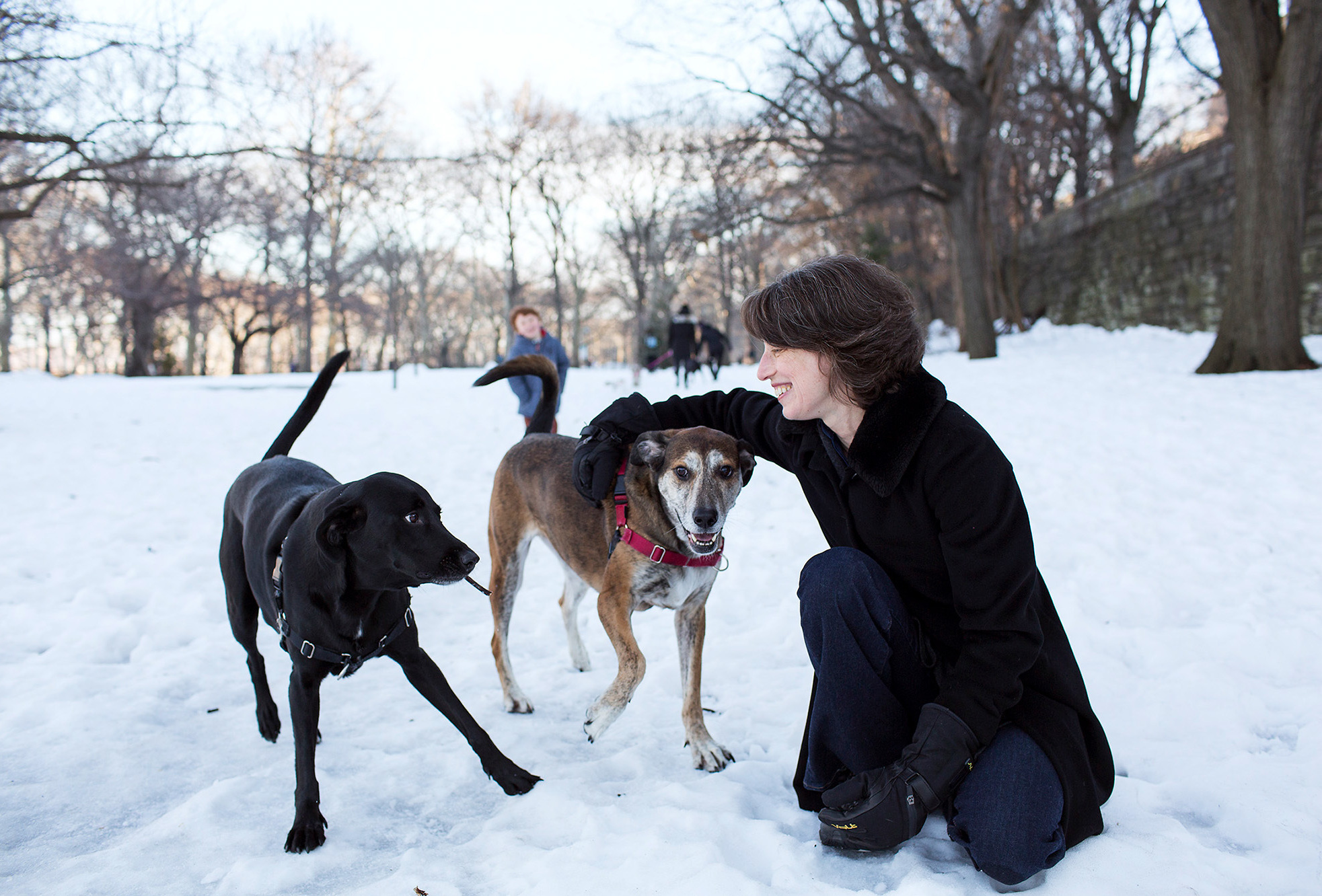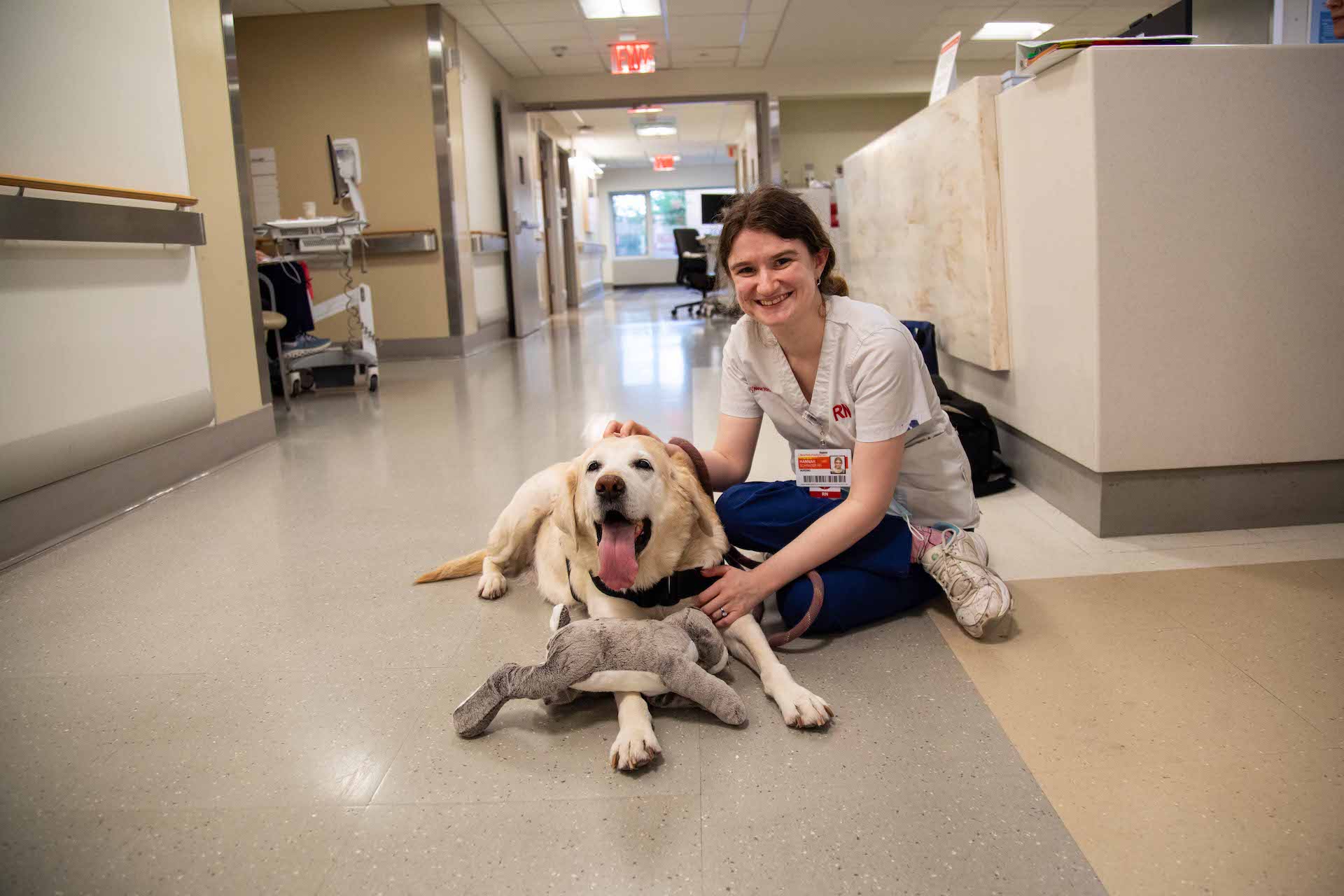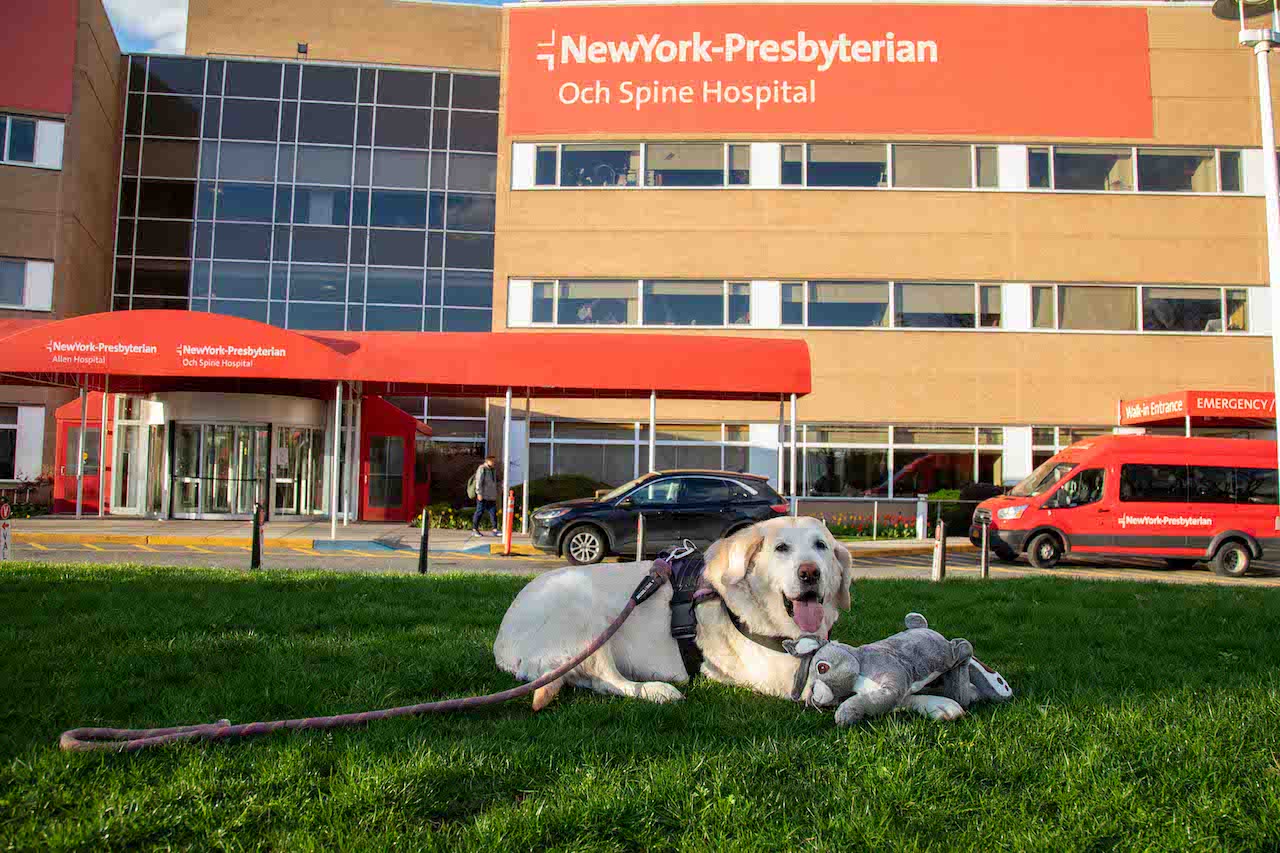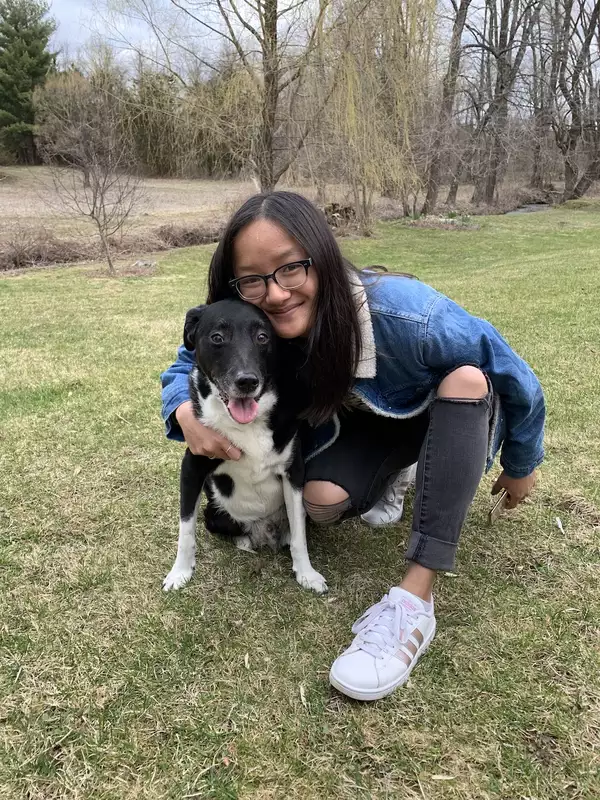Alexandra Horowitz — author, cognitive scientist, and Barnard’s senior research fellow and adjunct associate professor — has been illuminating the inner lives of dogs since 2008. That’s when she published her bestselling book Inside of a Dog, introducing the world to her beloved canine, “the warm, curly, panting form of Pumpernickel.” She also unpacked a new lexicon of dog behaviors — from the primacy of their olfactory senses to their ability to express joy. Since then, Horowitz has amassed a vast body of work on canine cognition, much of it informed by research performed at the Barnard Dog Cognition Lab, which she founded.
Her latest book, released this month, is a children’s edition of her 2022 book. It’s called The Year of the Puppy: How a Puppy Becomes Your Dog.
“We’re all interested in and sensitive to nonhuman animals as young people, but somehow many people’s gaze looks elsewhere as they age,” said Horowitz. “If we can harness some of that sensitivity and curiosity of youth into doing science to understand more about the animals we share the earth with, the world will be better for it.”
Her writings and teachings offer dog lovers and owners of all ages a different — and deeper — perspective into their furry, mostly silent companions. By exploring canine behavior, Horowitz’s work can help add a new dimension to the human-canine bond.
“It’s mostly about people being willing to have better relationships with their animals, which is great,” said Horowitz. “They’re willing to check their assumptions and reconsider the animals that we live with. That’s maybe the best part of my job.”
From Prairie Dogs to Pups
Animals have always fascinated Horowitz. Growing up in Golden, Colorado — where elk wandered the foothills — she was riveted by the animals around her, including prairie dogs she’d see in passing from her parents’ car en route to school.
“They were amazing. I just saw that there was this reliable community that I could observe right from the passenger seat,” said Horowitz. “It was a wildlife population I hadn’t known about and an early reminder that nonhuman communities are rich and complex and live parallel to us. As far as I knew, this was an entirely unknown community. We didn’t learn about these animals in school.”
That early inclination to observe animals would later inform her life’s work. Horowitz obtained her Ph.D. in cognitive science at the University of California, San Diego, where she also trained as an ethologist, a scientist of animal behavior. To complement her cognitive science program, she joined established research programs studying the white rhinoceros and the bonobo, or pygmy chimpanzee. This work tightened her focus on the animals in her life, especially the one with whom she lived.
The Dog Cognition Lab Begins
Pumpernickel opened Horowitz’s eyes to studying the cognition of dogs, and teaching at Barnard enabled her to create a community of like-minded researchers. In 2004, she became an adjunct professor at the College, designing and teaching a Theory of Mind and Intentionality seminar within the Psychology Department. Later, when she taught Introduction to Psychology and Animal Behavior in the Biology Department, the students in her classes expressed interest in dog work.
“I said, ‘Okay, let’s work together. I’ll create a lab,'” said Horowitz. In 2008, she established the Dog Cognition Lab, the first in the country. At the lab, Horowitz and her students engage in methodological studies of dogs. This semester, biology major Lila Muscosky ’24 is studying how dogs navigate vertical space in high-rise buildings.
“The lab has always been less a physical space than a community of a couple of researchers who work with me to pursue whatever their questions, empirically,” said Horowitz. At first, the lab had no physical home. But a few years ago, another devotee of dogs and behavioral psychology, Barnard alumna April Benson ’73, became interested in Horowitz’s work and made a gift to help support the facility. “So it’s developed and gotten more concrete over time,” explained Horowitz. “It turns out that it’s become [for students] a kind of practicum for the scientific method. And I think that’s really fun."
Horowitz continues to research and write books and articles on dog behavior. This includes working on a revised edition of Inside of a Dog and adding the results of updated research, some of which comes from her lab.
The overarching mystery that continues to drive Horowitz involves one big question about dogs. “I feel like I still don’t understand what it’s like to be them, how they experience the world,” she said. “I feel like we’re getting little glimpses. So we are just chipping away at that bigger question.”
Check out the photos above from golden retriever Blair’s visit to NewYork-Presbyterian Allen & Westchester Hospital, where she meets with staff and patients, and watch this clip from her POV as she navigates Barnard’s campus and students’ affection.
